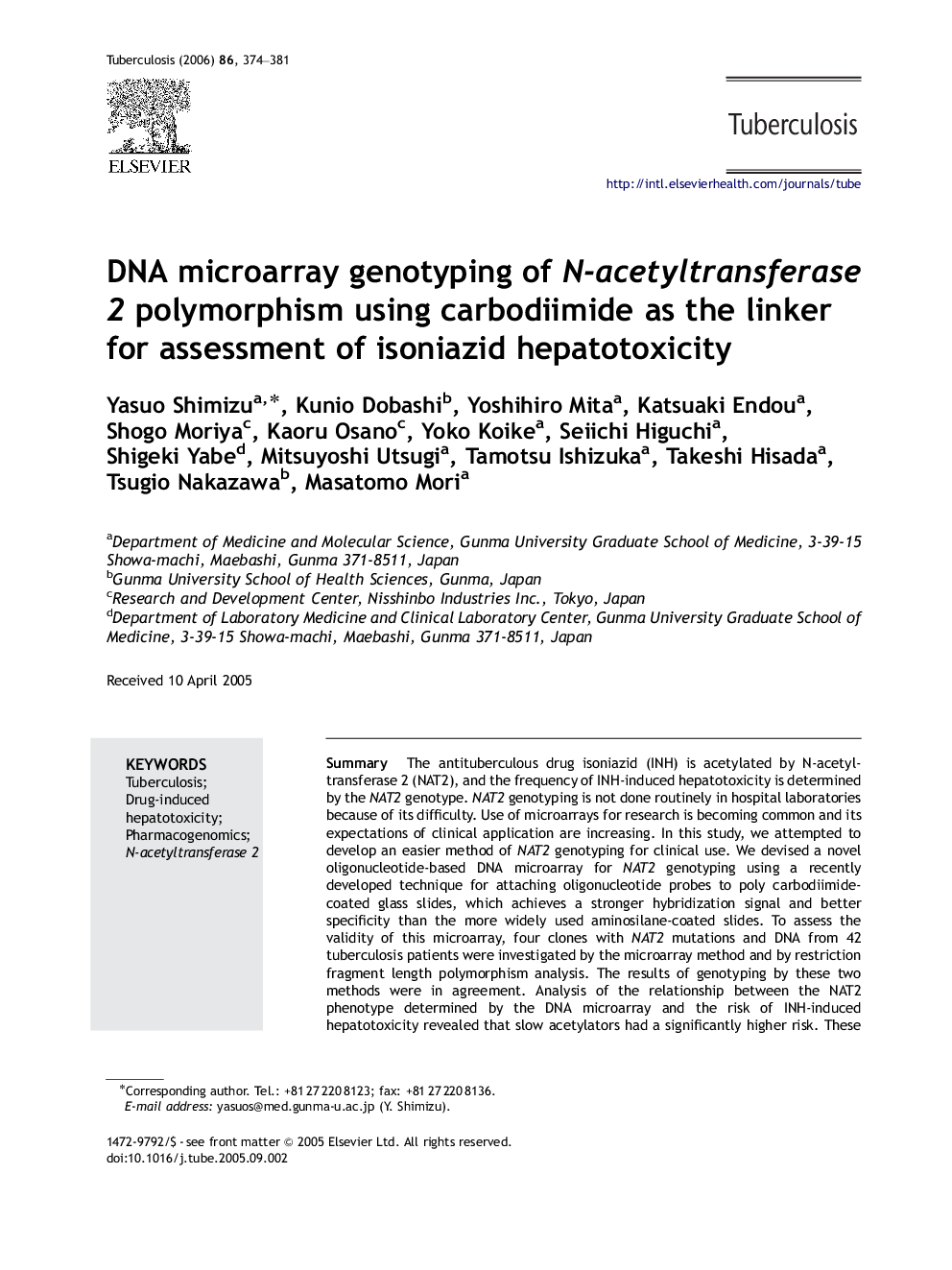| Article ID | Journal | Published Year | Pages | File Type |
|---|---|---|---|---|
| 2402053 | Tuberculosis | 2006 | 8 Pages |
SummaryThe antituberculous drug isoniazid (INH) is acetylated by N-acetyltransferase 2 (NAT2), and the frequency of INH-induced hepatotoxicity is determined by the NAT2 genotype. NAT2 genotyping is not done routinely in hospital laboratories because of its difficulty. Use of microarrays for research is becoming common and its expectations of clinical application are increasing. In this study, we attempted to develop an easier method of NAT2 genotyping for clinical use. We devised a novel oligonucleotide-based DNA microarray for NAT2 genotyping using a recently developed technique for attaching oligonucleotide probes to poly carbodiimide-coated glass slides, which achieves a stronger hybridization signal and better specificity than the more widely used aminosilane-coated slides. To assess the validity of this microarray, four clones with NAT2 mutations and DNA from 42 tuberculosis patients were investigated by the microarray method and by restriction fragment length polymorphism analysis. The results of genotyping by these two methods were in agreement. Analysis of the relationship between the NAT2 phenotype determined by the DNA microarray and the risk of INH-induced hepatotoxicity revealed that slow acetylators had a significantly higher risk. These findings suggest that our microarray may be clinically useful for predicting drug reactions to INH.
